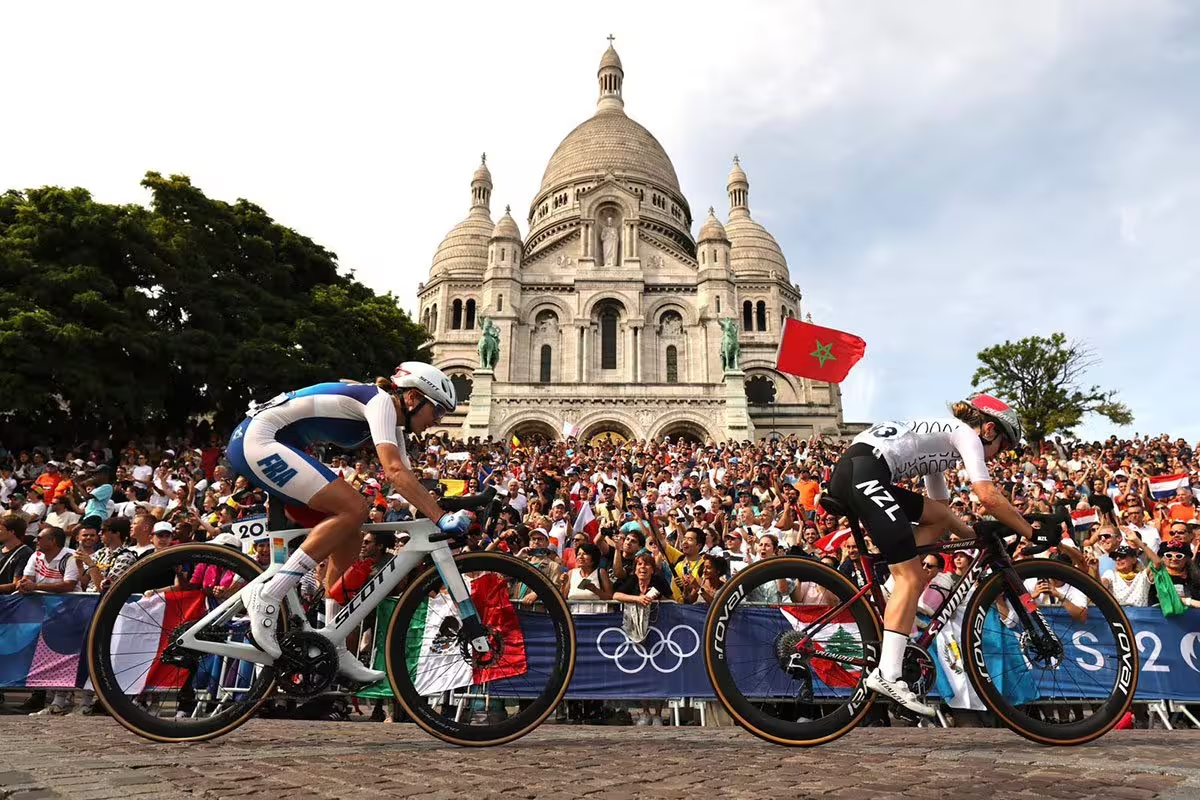Most Olympic sports are contained within an arena or stadium, or in the case of Paris, a small palace. But the Olympic road races presented their own unique set of logistical planning and challenges. Road closures outside of the city limits took up a few pages of the local newspapers. Buses were cancelled, towns were shut down for the day. This was a major event.
And within Paris, it was much the same story. A part of the city was fairly incapacitated. But that didn’t keep the crowds at home. The gendarmerie funnelled hordes of pedestrians along the parts of streets that were open. Commuter bikes were allowed to whiz up and down some streets until the roads needed to be closed for good to allow racers to pass.
Both Olympic road races really capitalized on the postcard-perfect tourist sights, making for a pretty scenic broadcast. The Louvre, the Sacré Coeur Basilica in Montmartre and the Eiffel Tower all had their moments. Even Versailles, the famous castle commissioned by Louis XIV that sits just outside of the city, was part of the backdrop.
There were stands lining both sides of the finish line at the Trocadéro, where paying spectators could sit in the stands and watch the race on large screens to catch all the action and commentary. All eyes were on the finish line when Kristen Faulkner sailed through solo for gold after her successful breakaway. Here are some interesting facts to come out of this women’s road race.
This was the first time in Olympic history there were an equal number of competitors in the men’s and women’s road races
It seems a bit wild that it’s 2024 and this is the first Olympic games with gender parity, but any adjustment is sure to help advance the sport. There were 90 competitors on both race days. And just as a side note, this was the first time in Olympic history that there were an equal number of men and women in the time trial and that they rode the same course.
When asked about her thoughts on this after her race, Canadian cyclist Olivia Baril (who also raced in last weekend’s TT) said that she thought it was well overdue. “It’s still a different race than like…
Click Here to Read the Full Original Article at Canadian Cycling Magazine…

